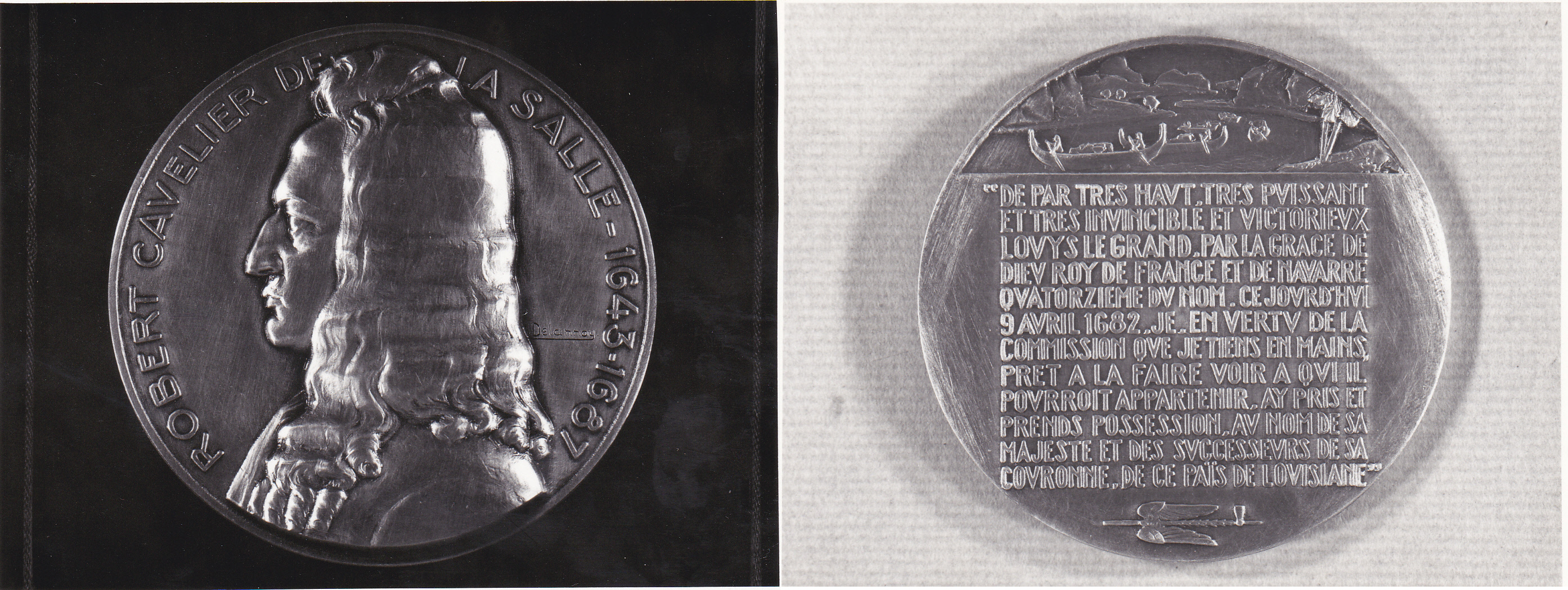France has a long history of issuing commemorative coins, honoring significant members in French history. It was only in 1982 that the Monnaie de Paris (Paris Mint) began issuing commemorative coins that were considered legal tender. The Monnaie de Paris is the French government’s oldest institution, created in the year 864. In more recent years, coins have been produced to commemorate a much broader range of topics, ranging from select wines, to the anniversary of the Statue of Liberty, to various Disney characters, and everything in between.
This particular silver-coated, bronze coin was minted in 1975 to commemorate French explorer Robert Cavelier de La Salle (and was therefore not considered legal tender). He was born in November 1643 in Normandy with a thirst for adventure. He swore his initial vows to the Jesuit religious order in 1660, though was released seven years later at his own request before taking his final vows. It was then that he took it upon himself to travel the world. Following in his brother Jean’s footsteps, La Salle sailed for New France in Canada and was granted a piece of land on the Island of Montreal. He named it Lachine (“La Chine” is the French word for China, and some believe this name choice was selected from a desire to find a direct route to China). He quickly picked up the native languages from surrounding peoples well enough to learn that the Ohio River flowed into the Mississippi River, which could ultimately lead him to the ocean. This would allow him to plan a western route to China, and thus an adventure was born. La Salle sold his Lachine to finance sailing down the Mississippi, though only made it as far as Kentucky due to harsh river conditions and crew illness.
Undiscouraged, La Salle returned to Canada 1673 landless. He was beginning to make a name for himself and was sponsored by the Louis de Buade de Frontenac, the Governor of New France, to oversee the construction of Fort Frontenac. It was soon to be the newest station in a complex fur-trading network. To further his cause, La Salle sailed back to France to gain royal financial support from the king, Louis XIV. Not only did he receive enough money to manage and maintain Fort Frontenac, but also received money and permission to build more forts to expand his network, as well as a title of nobility.
La Salle now had the means to begin exploring again. He set sail in 1679 on a ship named Le Griffon with Italian explorer Henri de Tonti around the Great Lakes. They established Fort Miami, which was later destroyed by mutinous soldiers. In 1681, both explorers set sail for La Salle’s most famous mission. They traveled down the Mississippi River once more, naming the river basin La Louisiane in honor of King Louis XIV. This was the official declaration of Louisiana for France. La Salle embarked on several smaller expeditions for the Mississippi while staying primarily in Texas. His final journey, purposed to establish a French colony, Fort Saint Louis, in Texas. After suffering another mutiny, La Salle was killed by Pierre Duhaut in March 1687 at the age of 43. In 1688, Native Americans destroyed his final fort, killing the residing adults and capturing remaining children.
Today, one of La Salle’s ships, La Belle, as well as several of his artifacts, are on display as archaeological treasures at several Texan museums.
